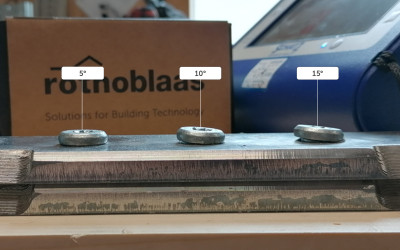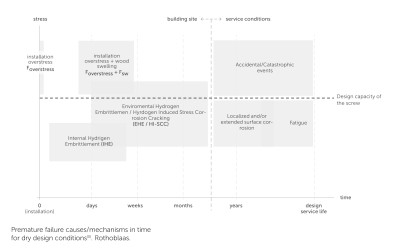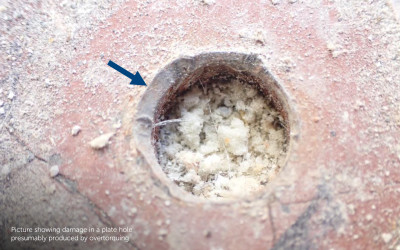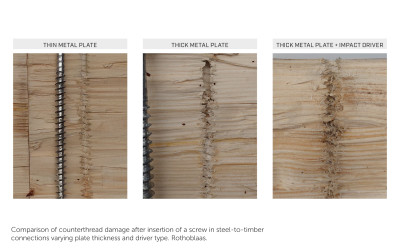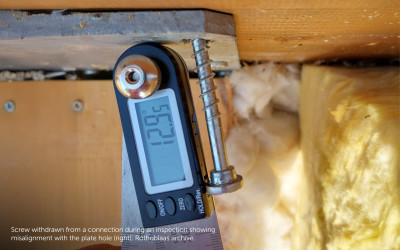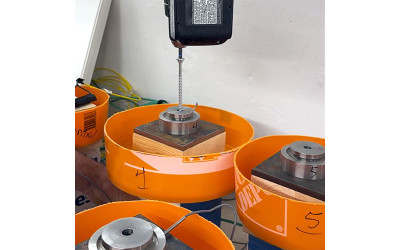Timber screws and connections: preventing failure through correct installation
Where does screw strength begin?
Timber screws play a key role in structural connections, especially in more complex joints between steel and timber. With their growing use in increasingly large buildings and hybrid construction systems, new questions have emerged: What happens when these screws fail prematurely?
And even more importantly, to what extent does installation affect the likelihood of screw failure?
Premature failure is not simply a matter of product quality – it is the result of an unstable balance between mechanical stresses, environmental conditions and installation methods.
The following graph, taken from the Rothoblaas Whitepaper "Premature Failure in Timber Screws: Insights into Hydrogen Embrittlement and Stress-Driven Risk", shows the timeline and mechanisms behind different types of screw failure in timber: from more immediate failure under “dry” conditions, such as overtorque and Internal Hydrogen Embrittlement (IHE), to delayed failure in “wet” conditions, such as Humidity-Induced Stress Corrosion Cracking (HI-SCC).
The message is clear: timber screw failure can begin well before any structural collapse occurs. In many cases, the trigger point is already present at the time of installation but its effects only manifest after prolonged exposure to unfavourable conditions.
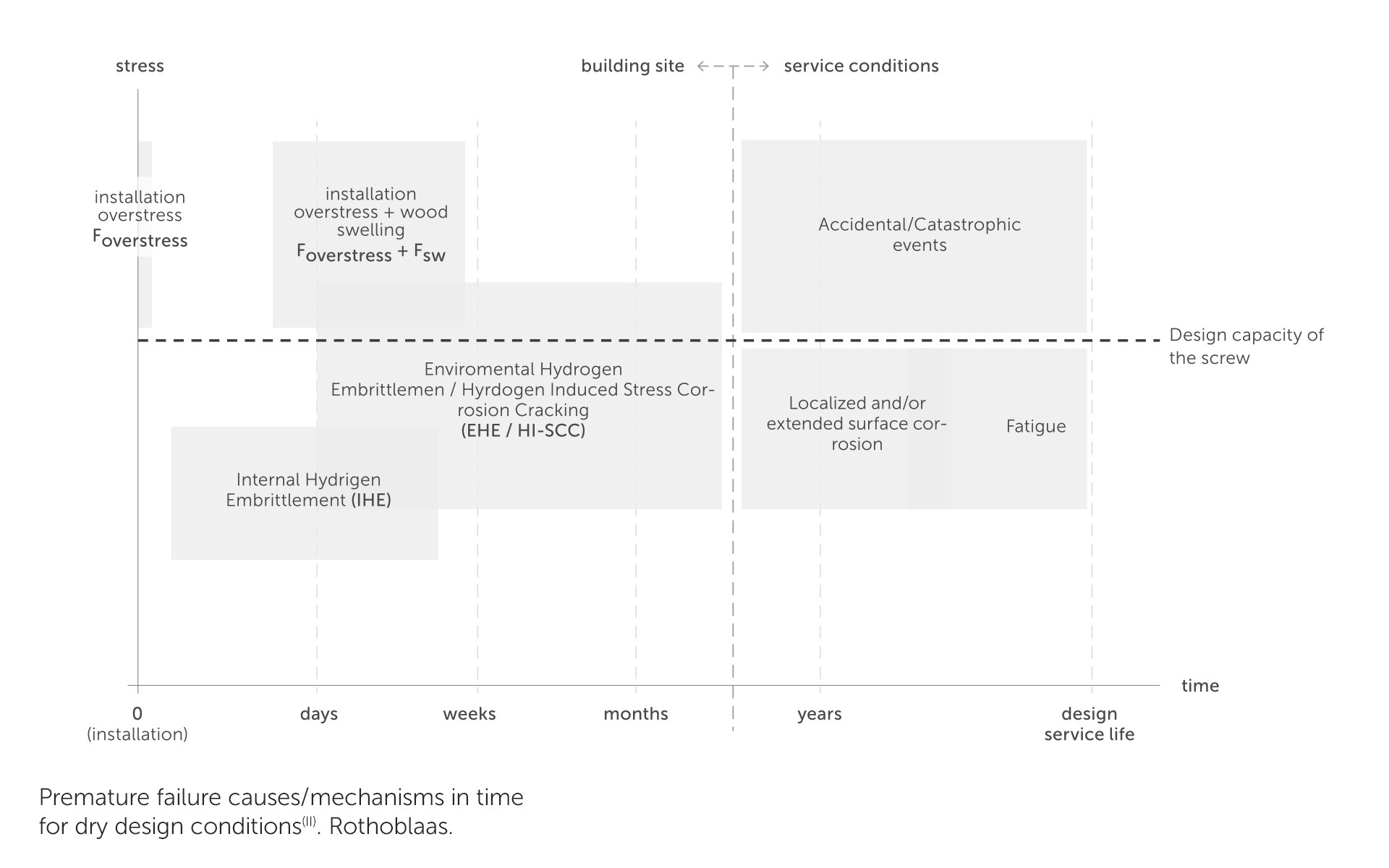
Overtorque in timber screws: when “proper tightening” becomes “over-tightening”.
One of the main causes of premature failure under dry conditions is excessive torque during installation – known as overtorque – which undermines the strength of the screw.
This occurs when the tightening torque exceeds the maximum recommended values for the screw, creating residual stresses along the shank and reducing its ability to plastically deform.
An increase of just 20–30% above the recommended torque range is enough to significantly compromise the tensile strength of the connector.
This phenomenon is more common than one might think, particularly on site, where the instinct to “tighten it properly” often results in exceeding the technical limits.
But the problem isn’t limited to manual force – it becomes even more critical when impact drivers are used in timber-to-steel connections, especially where thick or very rigid plates are involved.
In these configurations, screws are more prone to failure: the connector cannot adjust as it would in timber-to-timber connections – the screw head stops against the steel plate, while the driver continues to apply torque.
This can cause the screw to undergo unnecessary parasitic torque, whereby residual stress is concentrated both beneath the head and along the first section of the threaded shank, where fractures are most commonly observed.
Localised plastic deformation can also lead to microcracks in the protective coating, triggering corrosion mechanisms in the presence of moisture.
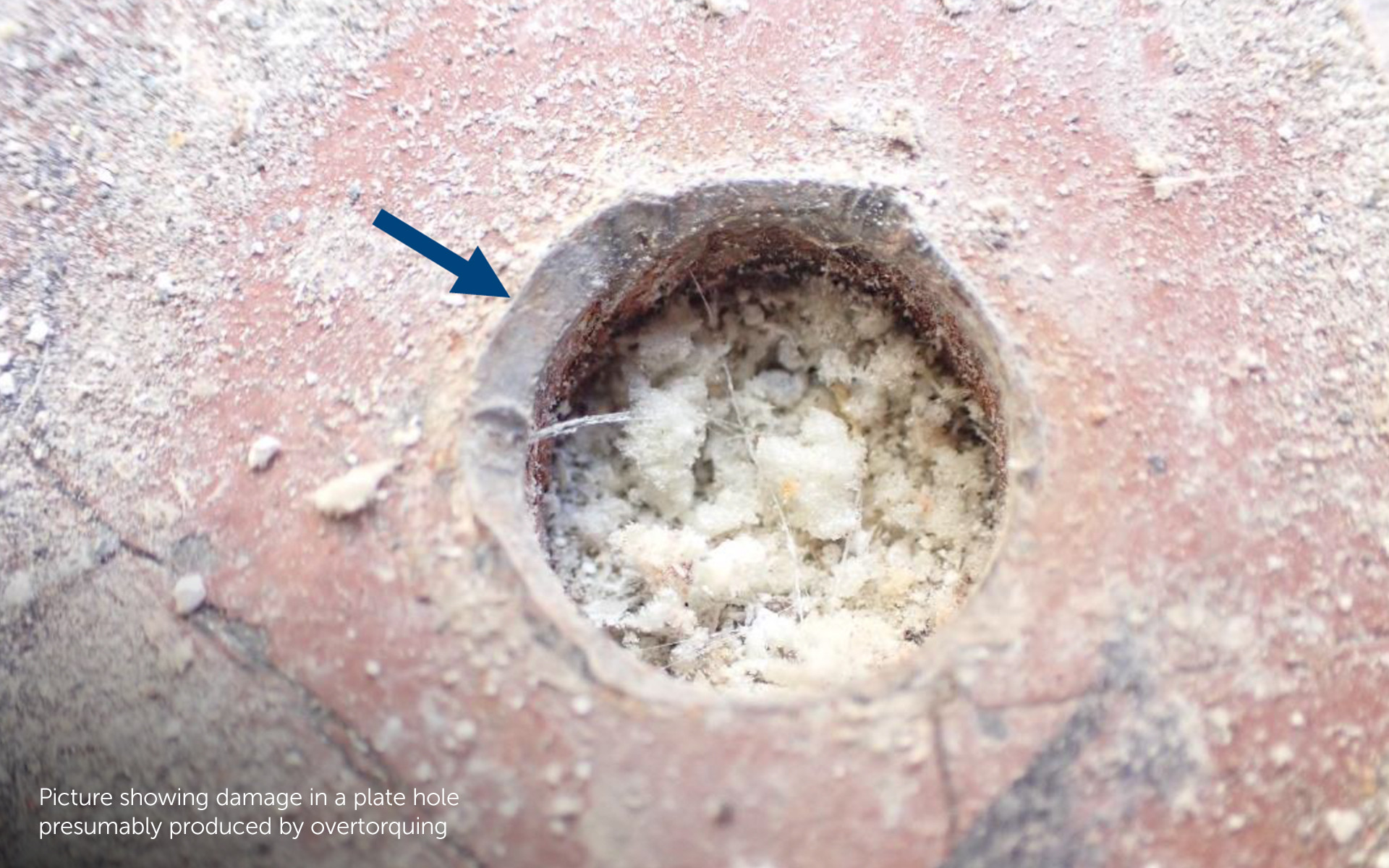
In laboratory conditions, controlled use of impact drivers on steel-to-timber connections has shown torque values exceeding the manufacturer’s recommended limit by up to 230%, without being perceptible to the operator. This excess not only places the screw under extreme stress but also causes a second, more subtle effect: damage to the internal thread in the timber. When the screw reaches the end of its stroke on the plate but continues rotating, it no longer advances into the wood. Instead, it breaks apart the fibres previously compacted during insertion, potentially weakening its withdrawal resistance.
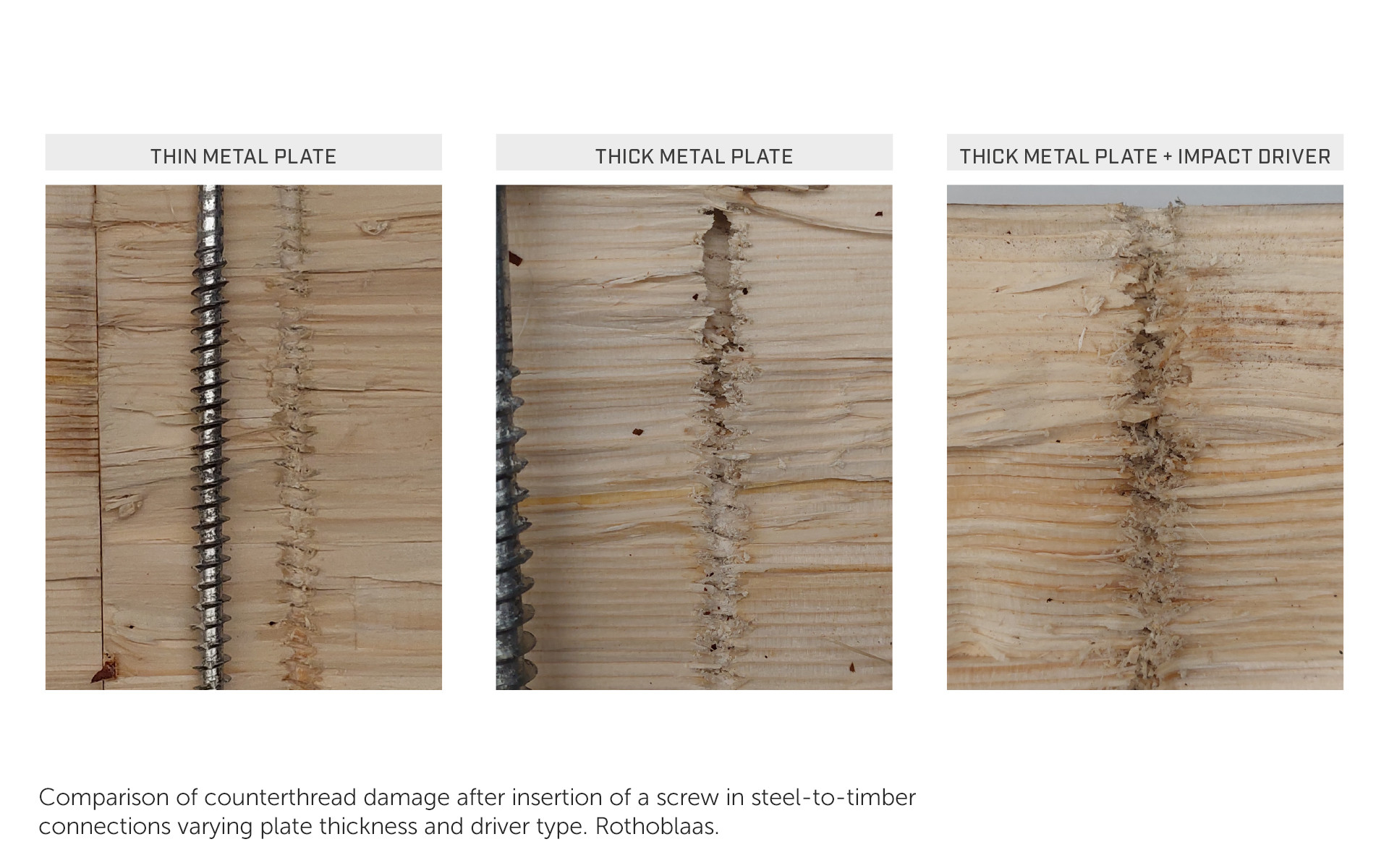
Even without immediate failure, a timber screw damaged by overtorque can fail prematurely under load, particularly when combined with additional factors such as moisture, vibration or localised failure in the timber.
The use of impact drivers is not inherently problematic: the risk only emerges in rigid configurations, typically in steel-to-timber connections. In timber-to-timber connections, where there is greater capacity for deformation and stress distribution, these tools can be safely used, provided the installation is completed within the specified torque limits.
Incorrect angles: an invisible threat to timber screws
Even a minor deviation from the correct insertion angle can result in permanent deformation (bending) along the screw shank. Test data confirms that this condition can significantly reduce the screw’s tensile capacity by up to 30% in some cases, depending on the degree of bending. In dry conditions, such deformation presents a lower risk of immediate failure.
However, if moisture penetrates the connection, the microcracks formed during insertion become preferential paths for corrosion and hydrogen absorption. It is under these conditions that a connector may fail, even under loads well below its rated capacity.
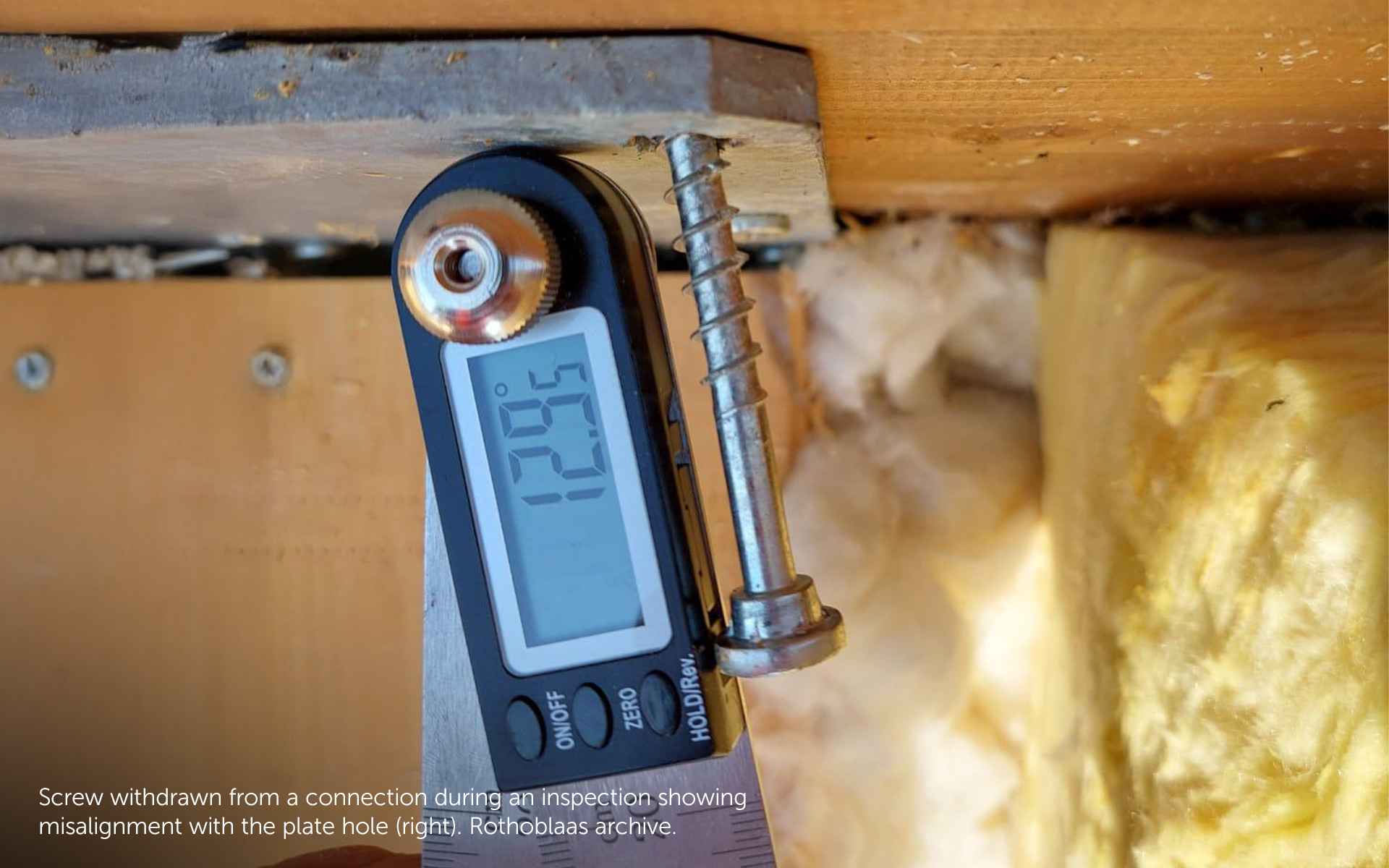
Timber swelling: why screws fail.
Moisture-induced timber swelling can exert considerable pressure on screws, especially in steel-to-timber connections. According to a study by the University of Alberta, the combination of swelling and overtorque can generate an axial load equal to 65% of the screw’s tensile capacity, even before any external load is applied.

The invisible effect of microscopic failure mechanisms
As demonstrated, installation-related microcracks are caused by overtorque, bending due to incorrect insertion angles and violent contact between the screw’s shank, thread or head and the steel plate. Though initially harmless, these discontinuities can evolve into fractures under load or serve as hydrogen absorption sites in the presence of moisture. Their risk potential increases exponentially when timber screws are installed in damp conditions and/or in contact with aggressive wood types. In such scenarios, even screws with low hardness can become susceptible to environmental embrittlement.
All of these factors that compromise screw durability can emerge at different stages of the installation and assembly process.
Installation quality is thus the outcome of a coordinated chain of technical actions:
The designer is responsible for clearly specifying the installation requirements: maximum torque, angle limitations and design environmental conditions.
They must also define a Moisture Management Plan to limit the structure’s exposure to wet conditions, especially during construction.
The manufacturer must ensure that connectors are designed and tested to withstand the intended loads and conditions, providing appropriate technical specifications and installation guidelines.
The installer must follow the instructions provided by both the designer and the manufacturer, using the proper tools: jigs, drilling guides and pilot holes can greatly improve angular accuracy, while torque-controlled screwdrivers help keep tightening within safe limits.
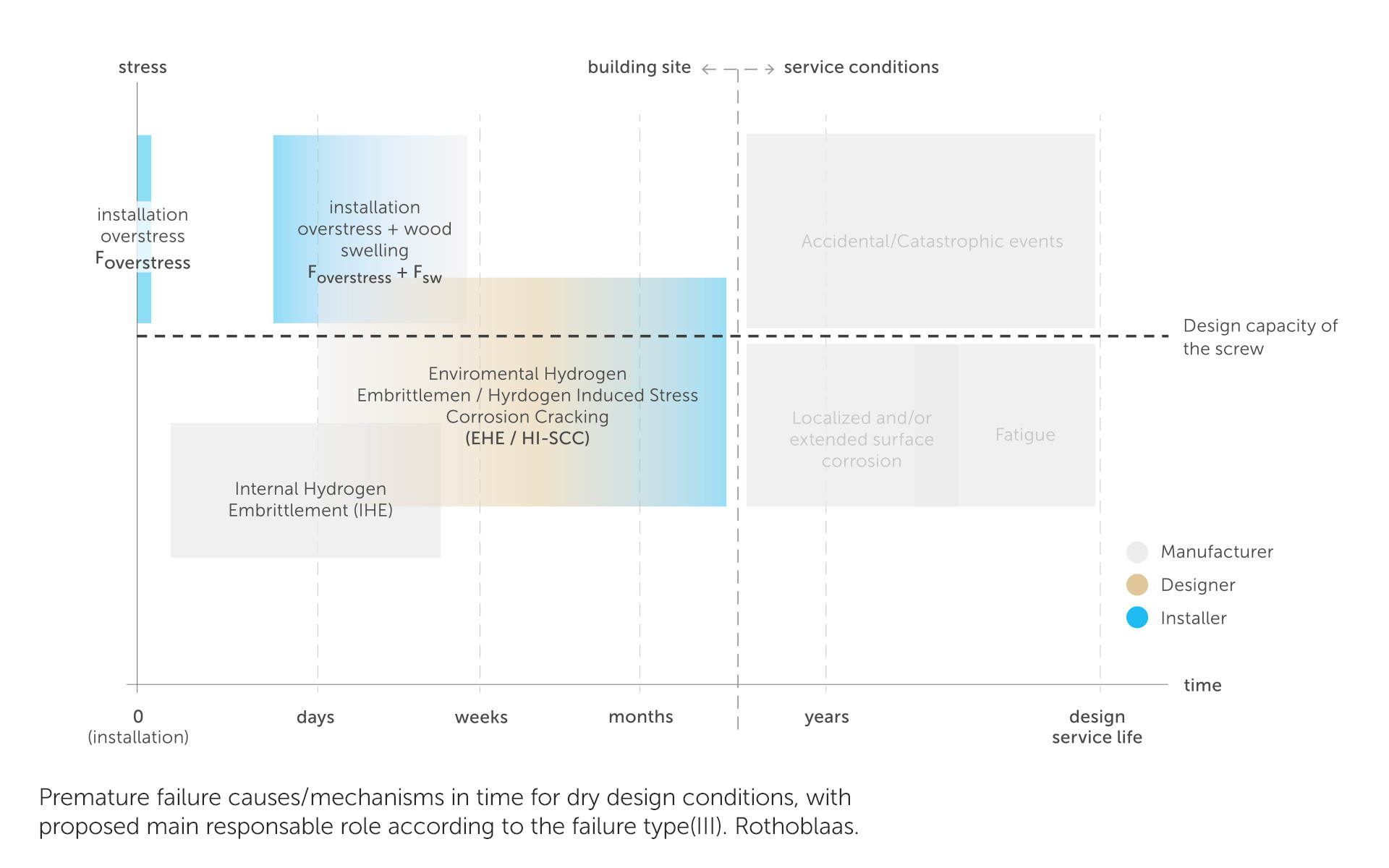
Best practices and useful tools to prevent timber screw failure
Checking alignment is about more than simply “looking straight”. Installations in exposed environments must be protected: membranes, sealants and logistical planning can make all the difference.
Rothoblaas products such as the TORQUE LIMITER, or jigs like the JIG VGU, have become essential allies in every installer’s toolkit.
Even the strongest screw can fail if handled carelessly. Data collected by Rothoblaas and research partners (KIT and the University of Alberta) confirms that installation is key to the integrity of timber screws: every incorrect installation is a potential failure trigger.
Careful installation, adherence to recommendations and understanding failure mechanisms – this is the mindset that will ensure screws continue to support the increasingly large and demanding structures of the future without giving way.
Rothoblaas has accepted this mission, learn more about our commitment here: Premature Failure in Timber Screws: Insights into Hydrogen Embrittlement and Stress-Driven Risk
All rights reserved




